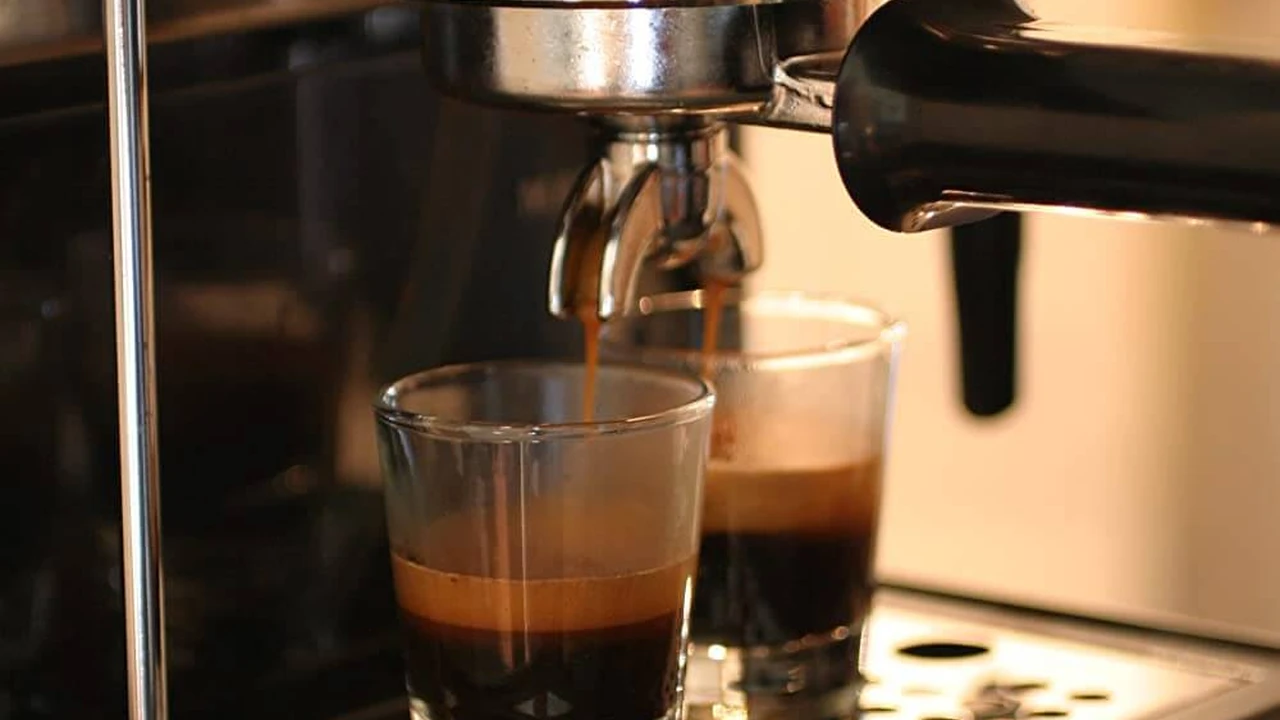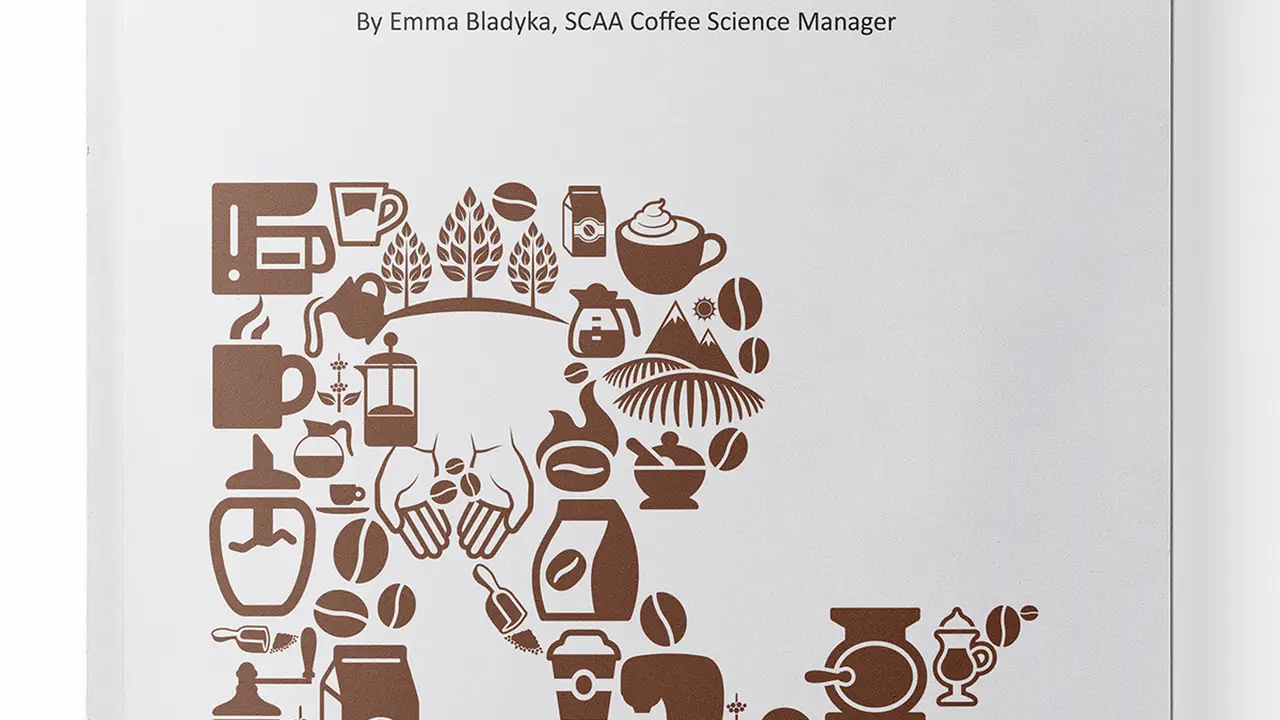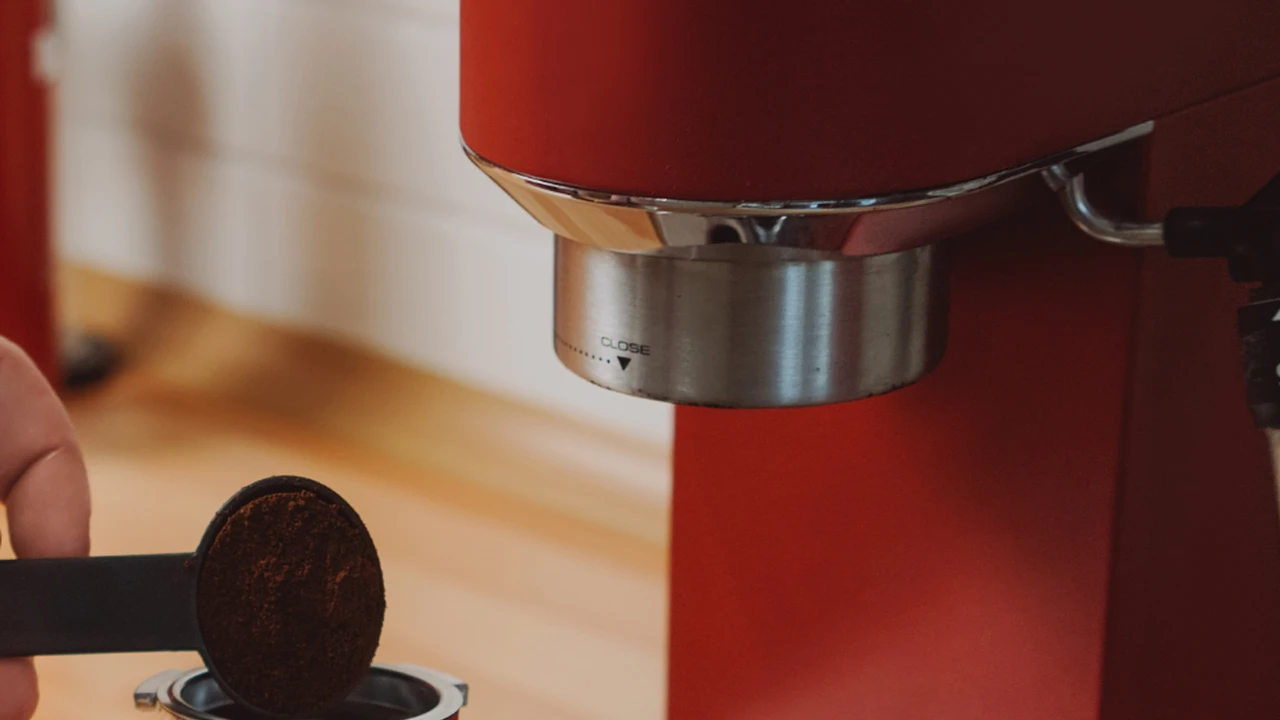Best Semi Automatic Espresso Machines for Home Use
Explore the top semi-automatic espresso machines for home baristas. Get control over your brew with manual settings and consistent results.

Best Semi Automatic Espresso Machines for Home Use
Hey coffee lovers! If you're anything like me, you've probably dreamt of pulling perfect espresso shots right in your own kitchen. While super-automatic machines offer convenience, and manual levers give you ultimate control, semi-automatic espresso machines strike a fantastic balance. They give you enough control to truly learn the art of espresso making – dialing in your grind, perfecting your tamp, and mastering milk steaming – without requiring you to be a full-time barista. It's where passion meets practicality, allowing you to craft café-quality drinks with a hands-on approach.
In this comprehensive guide, we're diving deep into the world of semi-automatic espresso machines for home use. We'll explore what makes them tick, what to look for when buying one, and, most importantly, recommend some of the best models on the market. Whether you're a budding enthusiast or looking to upgrade your current setup, you'll find everything you need to make an informed decision.
Understanding Semi Automatic Espresso Machines What Makes Them Special
So, what exactly is a semi-automatic espresso machine? Simply put, it's a machine that handles the water heating and pressure delivery, but leaves the crucial steps of grinding, dosing, tamping, and shot timing up to you. This hands-on involvement is what many home baristas crave. You're not just pressing a button; you're actively participating in the creation of your espresso. This level of control allows for significant customization and experimentation, leading to a deeper understanding and appreciation of coffee.
Unlike fully automatic machines that grind, tamp, and brew with the push of a button, semi-automatics require you to manually grind your beans (usually with a separate grinder), load the portafilter, tamp the coffee, and then start and stop the extraction. This might sound like more work, but it's precisely this interaction that allows you to fine-tune every variable and truly master your espresso. You can adjust the grind size, the amount of coffee, the tamping pressure, and the extraction time to achieve that perfect shot with rich crema and balanced flavor.
Key Features to Look For in a Home Semi Automatic Espresso Machine
When you're shopping for a semi-automatic espresso machine, there are several key features that can significantly impact your brewing experience and the quality of your espresso. Let's break them down:
Boiler Type Single Dual or Heat Exchanger
This is a big one! The boiler system dictates how your machine handles brewing and steaming. Single boiler machines are typically more affordable but require you to wait between brewing espresso and steaming milk. Dual boiler machines have separate boilers for brewing and steaming, allowing you to do both simultaneously without temperature fluctuations – ideal for entertaining or making multiple milk-based drinks. Heat exchanger (HX) machines have a single boiler but use a heat exchange tube to heat brew water on demand, offering a good compromise between single and dual boilers in terms of simultaneous operation.
Pump Pressure and Stability
Most home machines advertise 15 bars of pressure, but what you really want is a stable 9 bars at the group head during extraction. Look for machines with an Over Pressure Valve (OPV) to ensure consistent pressure. A good pump is crucial for proper extraction and rich crema.
Portafilter Size and Type
Standard commercial portafilters are 58mm, which is great for consistency and allows for a wider range of accessories. Some home machines use smaller sizes (e.g., 54mm). While smaller sizes can still produce good espresso, 58mm generally offers more forgiveness and better extraction potential.
Temperature Control PID Systems
PID (Proportional-Integral-Derivative) controllers are electronic systems that maintain a very stable brew temperature. This is vital for consistent espresso, as even small temperature fluctuations can drastically alter the taste of your shot. Machines with PID offer superior temperature stability compared to those relying solely on thermostats.
Steam Wand Performance and Milk Steaming
If you love lattes and cappuccinos, a powerful and well-designed steam wand is a must. Look for wands with multiple holes for faster, more efficient steaming and those that offer good articulation for ease of use. The ability to create silky microfoam is key for latte art and delicious milk drinks.
Build Quality and Materials
Stainless steel construction is generally preferred for durability and heat retention. Brass or copper boilers are also excellent for temperature stability. A heavier machine often indicates better internal components and overall build quality.
Integrated Grinder or Separate Grinder
While some semi-automatics come with integrated grinders, it's generally recommended to buy a separate, high-quality burr grinder. Integrated grinders often compromise on quality to fit into the machine, and a good grinder is arguably more important than the espresso machine itself for excellent results.
Top Semi Automatic Espresso Machines for Home Baristas
Alright, let's get to the exciting part – product recommendations! I've selected a range of machines that cater to different budgets and skill levels, all known for their performance and reliability.
1. Breville Barista Express Impress The Smart Entry Point
Price Range: $700 - $850 USD
Ideal User: Beginners to intermediate users who want a guided experience without sacrificing control. Great for those who want an all-in-one solution but still learn the ropes.
Key Features:
- Integrated Conical Burr Grinder: While I usually recommend separate grinders, Breville's integrated grinders are surprisingly capable for their price point. The 'Impress Puck System' features intelligent dosing and assisted tamping, which is a game-changer for beginners. It learns and adjusts the dose based on your previous shot, reducing waste and speeding up the learning curve.
- ThermoCoil Heating System: Provides quick heat-up times, usually within 3 seconds, so you're not waiting around for your morning coffee.
- PID Temperature Control: Ensures precise water temperature for optimal espresso extraction.
- Manual Milk Steaming: A powerful steam wand allows you to texture milk for latte art. It's not the most powerful on the market, but it's very capable for home use.
- 54mm Portafilter: A slightly smaller portafilter than commercial machines, but still effective.
Why it's great: The Barista Express Impress is a fantastic starting point because it holds your hand just enough to get consistent results quickly, but still requires you to understand the fundamentals of espresso. The assisted tamping and dosing system is a standout feature that makes dialing in shots much less intimidating for newcomers. It's a compact, all-in-one solution that delivers excellent value.
2. Gaggia Classic Pro The Timeless Workhorse
Price Range: $450 - $550 USD
Ideal User: Enthusiasts who want a robust, no-frills machine that's highly moddable and built to last. Perfect for those who enjoy tinkering and learning.
Key Features:
- Commercial Style 58mm Portafilter: This is a huge plus, allowing you to use standard barista tools and accessories.
- Commercial Steam Wand: A powerful, articulated steam wand that's excellent for producing microfoam for latte art. It's a significant upgrade from older Gaggia models.
- Vibration Pump: Reliable and provides good pressure.
- Aluminum Boiler: Heats up relatively quickly. While not as stable as a PID-controlled machine out of the box, it's a popular machine for DIY PID upgrades.
- Simple Controls: Three rocker switches for power, brew, and steam. No fancy screens, just pure functionality.
Why it's great: The Gaggia Classic Pro is a legendary machine in the home barista community. It's known for its durability, ease of repair, and incredible moddability. Many users add a PID controller to it, transforming it into a temperature-stable powerhouse that rivals much more expensive machines. If you're willing to learn and potentially upgrade, this machine offers incredible long-term value and performance. It requires a good separate grinder to truly shine.
3. Rancilio Silvia The Italian Icon
Price Range: $800 - $950 USD
Ideal User: Serious home baristas looking for a durable, high-performance single-boiler machine with commercial-grade components. Great for those who prioritize shot quality and longevity.
Key Features:
- Commercial Grade Brass Boiler: Excellent thermal stability and durability. This boiler is a beast and retains heat very well.
- Commercial Style 58mm Portafilter: Just like the Gaggia, this allows for standard accessories and better extraction.
- Articulating Commercial Steam Wand: One of the best steam wands in its class, capable of producing excellent microfoam.
- Heavy-Duty Construction: Built like a tank, designed to last for decades with proper care.
- PID Upgrade Potential: Like the Gaggia, the Silvia is a prime candidate for a PID upgrade, which significantly enhances its temperature stability and consistency.
Why it's great: The Rancilio Silvia has been a benchmark for home espresso machines for years. It's a single boiler, so you'll need to temperature surf (a technique to get the boiler to the right temperature for brewing) or add a PID for optimal consistency, but its commercial-grade components mean it's incredibly robust and capable of producing truly exceptional espresso. It's a machine that will grow with your skills and last a lifetime. Again, a high-quality separate grinder is non-negotiable with the Silvia.
4. Lelit Anna PID PL41TEM The Compact Performer
Price Range: $700 - $800 USD
Ideal User: Home baristas who want excellent temperature control and a compact footprint without breaking the bank. Great for smaller kitchens or those who want PID out of the box.
Key Features:
- Integrated PID: This is a major selling point. The Lelit Anna comes with a PID controller built-in, providing excellent temperature stability right out of the box.
- Brass Boiler: Good thermal mass for consistent temperatures.
- 57mm Portafilter: Slightly smaller than commercial standard, but still very capable.
- Steam Wand: Decent steam power for its size, capable of producing good microfoam.
- Compact Design: One of the more compact machines with a PID, making it suitable for smaller spaces.
Why it's great: The Lelit Anna PID offers fantastic value by including a PID controller as standard. This means you get superior temperature stability and consistency without the need for aftermarket modifications. It's a well-built, compact machine that punches above its weight in terms of performance, making it a strong contender for those who want excellent espresso without a huge countertop footprint. You'll still need a good separate grinder.
5. ECM Classika PID The Premium Single Boiler
Price Range: $1,400 - $1,600 USD
Ideal User: Discerning home baristas who want top-tier build quality, aesthetics, and performance from a single-boiler machine, with PID included.
Key Features:
- Integrated PID: Precise temperature control for consistent shots.
- E61 Group Head: A classic, heavy-duty group head known for its thermal stability and pre-infusion capabilities. This is a hallmark of high-end espresso machines.
- Large Stainless Steel Boiler: Excellent thermal mass and durability.
- Commercial Grade Steam Wand: Powerful and precise, making milk steaming a joy.
- Stunning Build Quality: Polished stainless steel exterior, robust components, and meticulous German engineering.
Why it's great: The ECM Classika PID is a step up in terms of luxury and performance. It combines the simplicity of a single boiler with the advanced features of an E61 group head and integrated PID. The E61 group head provides a gentle pre-infusion, which can lead to more even extractions and better-tasting espresso. This machine is built to last a lifetime and looks absolutely stunning on any countertop. It's an investment, but one that serious coffee enthusiasts will appreciate for years to come.
Setting Up Your Semi Automatic Espresso Machine for Success
Getting a great semi-automatic machine is only half the battle. Here's how to ensure you're getting the best out of it:
The Importance of a Quality Grinder
I cannot stress this enough: a good burr grinder is as important, if not more important, than your espresso machine. For espresso, you need a grinder that can produce a very fine, consistent, and clump-free grind. Blade grinders are a definite no-go. Look for conical burr or flat burr grinders specifically designed for espresso. Brands like Baratza, Niche, Eureka, and Mahlkonig are excellent choices. Your grinder allows you to dial in your shot, making micro-adjustments to the grind size to achieve the perfect extraction time and flavor.
Water Quality Matters
Your espresso is 98% water, so its quality significantly impacts taste and machine longevity. Use filtered water to prevent scale buildup in your machine and ensure a clean taste. Avoid distilled water, as it lacks minerals necessary for good extraction. Many home baristas use specific water recipes or third-party water filters to optimize their water for espresso.
Learning to Dial In Your Shot
This is where the 'semi-automatic' part truly comes alive. Dialing in involves adjusting your grind size, dose (amount of coffee), and tamp pressure to achieve an espresso shot that extracts in the ideal time frame (typically 25-30 seconds for a double shot) and tastes delicious. It's a process of trial and error, but incredibly rewarding. You'll learn to recognize signs of underextraction (sour, watery) and overextraction (bitter, harsh) and adjust accordingly.
Mastering Milk Steaming for Latte Art
If you love milk-based drinks, practice your milk steaming technique. The goal is to create 'microfoam' – milk that's velvety, glossy, and integrated with air, without large bubbles. This takes practice, but a good steam wand and fresh, cold milk are your best friends. Watch tutorials, experiment with different milk types, and don't be afraid to make mistakes – it's all part of the learning process.
Common Scenarios and Which Machine Fits Best
Let's consider some common home barista scenarios and which of these machines might be the best fit:
The Absolute Beginner Who Wants Guidance
If you're just starting out and feel overwhelmed by all the variables, the Breville Barista Express Impress is an excellent choice. Its assisted dosing and tamping system takes a lot of the guesswork out of the initial stages, allowing you to focus on understanding the basics of extraction and milk steaming. It's a great all-in-one package that provides a gentle learning curve.
The Enthusiast on a Budget Who Loves to Tinker
For those who enjoy a project and want maximum performance for their dollar, the Gaggia Classic Pro is unbeatable. Out of the box, it's a solid performer, but with a relatively inexpensive PID modification, it can compete with machines costing twice as much. It's a community favorite for a reason – robust, reliable, and endlessly customizable.
The Serious Home Barista Prioritizing Durability and Shot Quality
If you're looking for a machine that's built like a tank, will last for decades, and can consistently pull excellent shots, the Rancilio Silvia is your go-to. It requires a bit more learning (especially without a PID), but its commercial-grade components and robust build quality make it a long-term investment for serious coffee lovers. Pair it with a great grinder, and you'll be set for life.
The Space-Conscious Barista Who Wants PID Out of the Box
For those with limited counter space but who still demand precise temperature control, the Lelit Anna PID PL41TEM is a fantastic option. Its compact footprint combined with an integrated PID makes it a powerful and convenient choice for smaller kitchens, delivering consistent results without the need for modifications.
The Connoisseur Seeking Premium Experience and Aesthetics
If you're ready to invest in a truly premium single-boiler experience, the ECM Classika PID stands out. Its E61 group head, superior build quality, and elegant design make it a showpiece that delivers exceptional espresso. It's for those who appreciate the finer details and want a machine that performs flawlessly and looks stunning.
Maintenance Tips for Your Semi Automatic Espresso Machine
To keep your semi-automatic machine running smoothly and producing delicious espresso for years, regular maintenance is key. Here are some essential tips:
Daily Cleaning Routine
- Backflushing: If your machine has a 3-way solenoid valve (most do), backflush daily with water and weekly with a specialized espresso machine cleaner. This removes old coffee oils and grounds from the group head.
- Wipe Down Steam Wand: Always wipe your steam wand immediately after steaming milk to prevent milk from drying and clogging the tip. Purge a little steam through it too.
- Clean Portafilter and Baskets: Rinse your portafilter and baskets after every use.
- Empty Drip Tray: Prevent overflow and odors by emptying and cleaning the drip tray daily.
Weekly and Monthly Cleaning
- Deep Clean Portafilter and Baskets: Soak them in a solution of espresso machine cleaner to remove stubborn coffee oils.
- Clean Group Head Gasket and Shower Screen: Use a brush to scrub away any coffee residue.
Descaling Your Machine
This is crucial, especially if you live in an area with hard water. Scale buildup can clog your machine's internal components and affect performance. The frequency depends on your water hardness and usage, but generally, every 1-3 months is a good guideline. Always use a descaling solution specifically designed for espresso machines and follow your machine's instructions carefully.
Regular Gasket and Shower Screen Replacement
Over time, the group head gasket (which creates the seal between the portafilter and the group head) and the shower screen will wear out. Replace them as needed, usually every 6-12 months, to ensure proper sealing and even water distribution.
Investing in a semi-automatic espresso machine is a journey into the wonderful world of home coffee craftsmanship. It's about more than just making a drink; it's about the process, the learning, and the satisfaction of creating something truly delicious with your own hands. With the right machine and a commitment to learning, you'll be pulling incredible shots and impressing your friends and family in no time. Happy brewing!
:max_bytes(150000):strip_icc()/277019-baked-pork-chops-with-cream-of-mushroom-soup-DDMFS-beauty-4x3-BG-7505-5762b731cf30447d9cbbbbbf387beafa.jpg)






